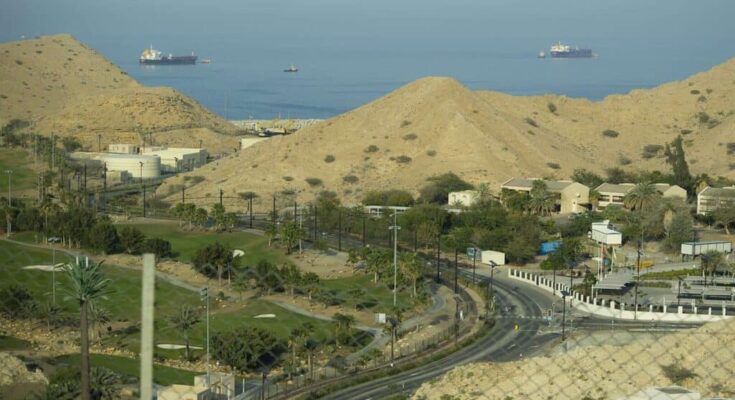
Muscat, Oman’s capital, is famous for its low-rise buildings and long history. Unlike Dubai, known for its skyscrapers, Muscat has preserved its traditional look. However, now, as Oman plans for a future without oil, it is working to modernize the city with a $2.6 billion Smart City project.
The country is pouring billions of dollars into new projects. One of the biggest is Sultan Haitham City. This new development will focus on keeping buildings low while providing homes for both locals and visitors, according to The Wall Street Journal’s YouTube video earlier this month.
Some experts worry that Oman’s plans may outgrow the project. Muscat, which lies between the Gulf of Oman and the Hajar Mountains, is home to a growing population.
Oman has about 5.2 million people today, but by 2040, that number could rise to 7.7 million. To make room for everyone, the country is launching projects such as that of Sultan Haitham City.
The city will provide homes, as well as schools and mosques, for 100,000 people. Compared to projects in other Middle Eastern countries, it is, nevertheless, on a smaller scale.
Oman is focused on preserving its culture
Oman’s plans are more modest than some of its neighbors. For instance, Saudi Arabia’s “The Line” will house 200,000 people and cost $100 billion. Egypt is also working on a new capital for six million people, which will cost $58 billion, according to The Wall Street Journal’s YouTube video.
Oman’s smaller approach comes from its desire to protect its local culture. In Dubai, only 15 percent of the population is composed of locals, while Oman aims to preserve its culture strong by ensuring that more native Omanis live and work in Muscat.
Oman is planning to expand its capital Muscat with a vast new 19-neighbourhood district that could eventually become home to 100,000 people. Designed by @SOM_Design as part of Oman Vision 2040, #construction at Sultan Haitham City is due to start later in 2024. pic.twitter.com/L0FVQjxKKa
— The B1M (@TheB1M) September 10, 2024
When Yasser Elsheshtawy, a professor of architecture at Columbia University, visited Muscat, his Omani hosts made it clear they don’t want their city to become another Dubai. While Sultan Haitham City will take time to complete—it won’t be finished until 2045—there are questions about whether Omanis will want to live there.
Oman has a high homeownership rate, with 89 percent of citizens owning their homes. However, many people live in low-density areas. The government provides free land, but it can take years to receive it, and the plots are often far from the city center, according to the above Wall Street Journal source.
Housing remains a challenge in Oman
The issue of housing isn’t just a problem for Oman. It actually affects the whole region. Middle Eastern governments have utilized oil wealth to offer free healthcare, education, and housing to keep their citizens happy.
However, as oil resources decline, these benefits may no longer be sustainable. Sultan Haitham City is designed to encourage people to live in more compact neighborhoods without missing out on private villa homeownership.
I Just learned about Sultan Haitham City in Oman! A modern urban project near Muscat, blending innovative architecture with traditional Omani culture. Exciting to see Oman’s vision for sustainable living and smart city tech unfold!
#UrbanDevelopment #Oman #SmartCities pic.twitter.com/HyBmVTkPCH
— Ara3635 (@ara3635) September 10, 2024
The government also plans to create a mass transit system connecting the new city to the old, which could reduce traffic and ease daily life.
This project is not only about housing locals. Oman hopes Sultan Haitham City will boost its tourism industry. It doesn’t attract as many tourists as nearby countries despite its beautiful landscapes and rich history.
Oman wants to avoid the “Dubaization” of its cities
Professor Elsheshtawy uses the term “Dubaization” to describe cities that are trying to rebuild, such as in Dubai, with tall buildings and a focus on visitors. Oman seems determined to avoid this.
However, with new projects like a $1.3 billion “Al Khuwair Waterfront” development planned for Muscat, the city may soon see taller buildings than ever before. This will alter Muscat’s skyline, which has always been more traditional and low-rise, according to The Wall Street Journal.
While new buildings may attract tourists and investors, they could increase inequality in the long run. In countries with oil wealth, this hasn’t been a huge issue yet. Nonetheless, as oil resources become limited, it may create social unrest.
Experts believe large gaps between the rich and poor were part of what caused the Arab Spring. Although things are stable for now, there are concerns this inequality could become more of an issue in the future, as is said in The Wall Street Journal’s video.




